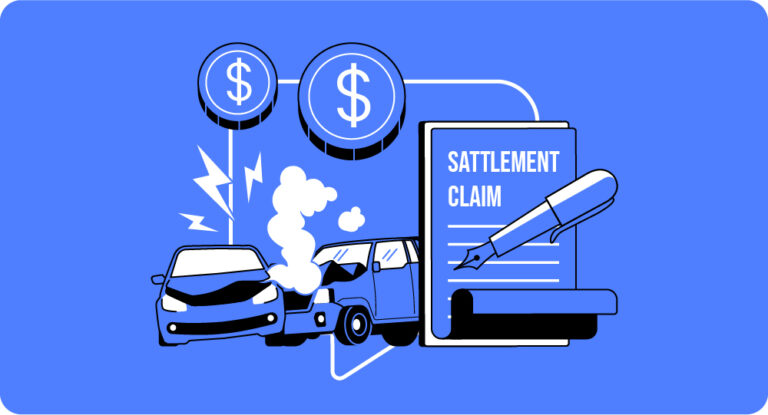Bodily injury claims are a critical aspect of personal injury law, often arising from accidents and unforeseen incidents.
Whether you’re a victim, a family member, or simply curious, this guide will walk you through the essentials, ensuring you’re well-informed every step of the way.
Factoid About Bodily Injury Claims in the US
| Factoid | Detail |
|---|---|
| Industry Value | $53.1 billion in 2022 |
| Common Cases | Motor vehicle accidents, medical malpractice, etc. |
| Average Case Duration | 23 months (varies by case type) |
| Annual Cases with Medical Treatment | 39.5 million in the US |
| Fatalities and Causes | 278,345 in 2020 (car accidents, unintentional injuries) |
| Number of Law Firms | 64,331 in the US |
| Market Growth | Expected 6.4% in 2022 |
| Trial Rate | 3 to 4 percent go to trial |
| Success Rates | Highest in motor vehicle incidents (61%) |
| Median Compensation | $31,000 |
An Overview of Bodily Injury Claims
Bodily injury claims are legal processes initiated by individuals who have suffered physical harm due to someone else’s negligence or intentional actions. These claims are a subset of personal injury law, focusing specifically on physical injuries to the body.
In the realm of accidents and injuries, the terms “bodily injury” and “personal injury” are often used interchangeably, but they have distinct meanings.
Bodily injury refers specifically to physical harm to a person’s body, such as cuts, fractures, or burns.
Personal injury, on the other hand, is a broader term that encompasses any injury, physical or otherwise, that an individual may suffer due to an accident or incident.
The process of filing a bodily injury claim can seem daunting, especially in the aftermath of an accident. However, understanding this process is essential for securing the compensation you deserve.
Types of Damages in Bodily Injury Claims
When pursuing a bodily injury claim, understanding the various types of damages you can seek compensation for is crucial.
These damages are not just limited to immediate medical expenses but encompass a range of economic and non-economic losses.
Here are the key types of damages typically involved in bodily injury claims:
- Medical Expenses
- Lost Wages
- Loss of Earning Capacity.
- Pain and Suffering
- Emotional Distress
- Loss of Enjoyment of Life
- Disfigurement and Scarring
- Loss of Consortium
- Punitive Damages
- Legal Fees and Costs
Understanding these types of damages is essential for accurately assessing the full impact of your injury and ensuring that you seek appropriate compensation.
Each type of damage plays a crucial role in the overall valuation of your claim.
The Process of Filing a Bodily Injury Claim
Filing a bodily injury claim is a crucial step in seeking compensation for injuries sustained due to someone else’s negligence. From the immediate actions post-accident to dealing with insurance adjusters, understanding these steps can significantly influence the outcome of your claim.
Initial Steps to Take Immediately After an Accident
The moments following an accident are often chaotic and confusing.
However, your actions during this time can have a significant impact on your bodily injury claim. It’s essential to remain calm and prioritize your safety and well-being.
If possible, document the accident scene with photographs and gather contact information from any witnesses. These initial steps lay the groundwork for a strong claim.
Seeking Medical Attention and Documenting Injuries
Your health is paramount. Seeking immediate medical attention not only aids in your recovery but also provides a professional assessment of your injuries. This medical documentation is a cornerstone of your bodily injury claim.
It’s crucial to follow all medical advice and keep a detailed record of your treatments, as these documents serve as evidence of the extent of your injuries.
How to Report the Accident and Injury to Relevant Parties
Reporting the accident to the necessary parties is a critical step. This includes notifying the police, your insurance company, and, if applicable, the other party’s insurer. When reporting, be factual and concise.
Avoid admitting fault or giving detailed statements without legal advice. The reports you make are official records that play a significant role in your claim.
Gathering Evidence to Support Your Claim
Collecting evidence is key to substantiating your claim. This includes everything from photos of the accident scene and your injuries to witness statements and police reports.
Keep a detailed log of your medical treatments and any correspondence related to the accident. The more comprehensive your evidence, the stronger your claim will be.
Understanding the Role of Insurance Companies
Insurance companies play a central role in bodily injury claims. It’s important to understand that while they may seem helpful, their primary goal is to minimize payouts.
Be cautious in your interactions and avoid signing any documents or accepting settlements without understanding their full implications.
Consulting with a legal professional can provide clarity and guidance in dealing with insurers.
The Importance of Timely Filing of the Claim
Time is of the essence in bodily injury claims. Each state has its own deadlines, known as statutes of limitations, for filing these claims.
Missing these deadlines can result in the loss of your right to claim. It’s crucial to be aware of these time frames and ensure your claim is filed promptly.
Navigating the Claims Process
Embarking on the journey of a bodily injury claim can be overwhelming, especially when you’re unfamiliar with the process. Here’s a step-by-step guide to the claims process:
- File the Claim
- Present Your Evidence
- Review Settlement Offers
- Negotiate for a Fair Amount
- Seek Legal Advice
- Finalize the Settlement
- Receive Compensation
- Close the Claim
The claims process requires patience, attention to detail, and a clear understanding of your rights and the value of your claim.
By following these steps, you can approach your claim with confidence and clarity, ensuring that no critical aspect is overlooked.
The Role of a Personal Injury Attorney in Filing a Claim
A personal injury attorney can be a valuable ally in filing a bodily injury claim. They bring knowledge and experience in dealing with insurance companies and legal proceedings.
An attorney can help in gathering evidence, filing the claim, and negotiating settlements, ensuring your rights are protected throughout the process.
Dealing with Insurance Adjusters and Negotiations
Insurance adjusters are skilled negotiators working in the interest of the insurance company.
When dealing with them, it’s important to be prepared and cautious. Avoid providing any statements that could be used against your claim.
Negotiations can be complex, and having a legal professional on your side can be immensely beneficial in achieving a fair settlement.
Common Challenges and How to Overcome Them
Filing a bodily injury claim can present various challenges, from gathering sufficient evidence to dealing with uncooperative insurance companies.
Overcoming these challenges often requires persistence, detailed documentation, and legal knowledge.
Staying informed, organized, and seeking professional legal assistance can greatly aid in navigating these hurdles successfully.
Legal Aspects of Bodily Injury Claims
Understanding the legal aspects of bodily injury claims is crucial for anyone involved in such a situation. Grasping these concepts can empower you to make informed decisions and strengthen your claim.
Understanding Your Legal Rights and Responsibilities
When you’re involved in an accident resulting in bodily injury, it’s important to know your legal rights and responsibilities.
You have the right to seek compensation for your injuries if they were caused by someone else’s negligence. At the same time, you have the responsibility to act within the legal time frames and guidelines set by the law.
Being aware of these rights and responsibilities is fundamental to the success of your claim.
The Concept of Negligence and Liability in Bodily Injury Cases
Negligence is a key concept in bodily injury claims. It refers to the failure to take reasonable care, resulting in injury to another person.
To establish negligence, you must prove that the other party had a duty of care, breached that duty, and caused your injuries as a result.
Understanding how to demonstrate negligence is critical in establishing liability and securing compensation.
How State Laws Affect Bodily Injury Claims
Bodily injury claims are governed by state laws, which can vary significantly. These laws can affect various aspects of your claim, including the time frame for filing (statute of limitations), comparative negligence rules, and caps on damages.
Familiarizing yourself with the laws of your state is essential for a well-informed approach to your claim.
The Statute of Limitations for Filing a Claim
The statute of limitations is the deadline by which you must file your bodily injury claim. This deadline varies by state and type of injury.
Failing to file within this period can result in losing your right to claim. It’s crucial to be aware of these deadlines and ensure your claim is filed in a timely manner.
Determining Fault and Its Impact on the Claim
Determining who is at fault in an accident is a critical aspect of a bodily injury claim. Fault affects how much compensation you can receive.
Some states follow a comparative negligence rule, where your compensation can be reduced by your percentage of fault in the accident. Understanding how fault impacts your claim is vital for a realistic expectation of the outcome.
The Role of Evidence in Proving Liability
Solid evidence is the backbone of a successful bodily injury claim.
This evidence can include accident reports, witness statements, medical records, and more. It’s used to establish the facts of the case and prove the other party’s liability.
Gathering and presenting strong evidence is crucial for a compelling claim.
Understanding Compensatory and Punitive Damages
In bodily injury claims, damages are usually categorized as compensatory or punitive.
Compensatory damages are intended to reimburse you for the costs associated with your injury, like medical bills and lost wages.
Punitive damages, on the other hand, are awarded in cases of egregious negligence to punish the wrongdoer.
Knowing the types of damages you can pursue is important for understanding the potential value of your claim.
The Process of Litigation in Bodily Injury Cases
If a settlement cannot be reached, your claim may go to litigation. This involves presenting your case in court, where a judge or jury will decide the outcome.
Litigation can be a lengthy and complex process, requiring a thorough understanding of legal procedures and strong evidence to support your claim.
Protecting Your Rights Throughout the Legal Process
Throughout the legal process of a bodily injury claim, it’s important to protect your rights.
This includes being aware of your legal options, understanding the implications of each decision, and ensuring you’re treated fairly by all parties involved.
Seeking legal assistance can be invaluable in safeguarding your rights and interests.
Need Help with Your Bodily Injury Claim?
If you’re dealing with the aftermath of a car accident and need guidance on your bodily injury claim, Crockett Law Group is here to help.
Our team of experienced car accident lawyers in Irvine is dedicated to supporting you through every step of the process.
Reach out to us at (800) 900-9393 for expert legal assistance and take the first step towards securing the justice and compensation you deserve.










